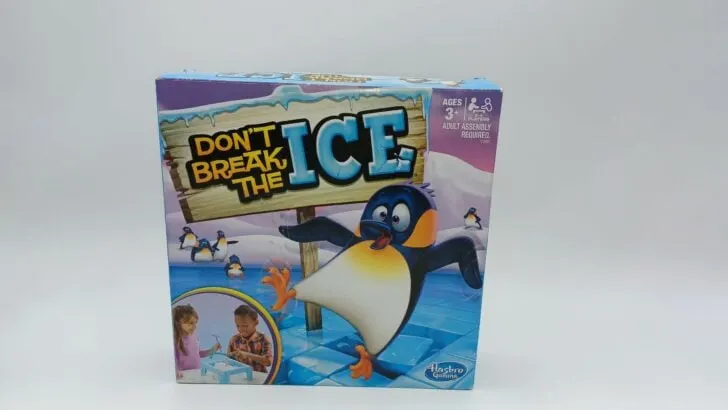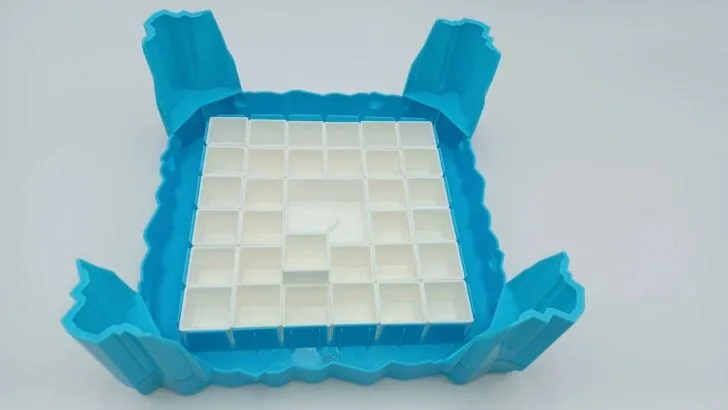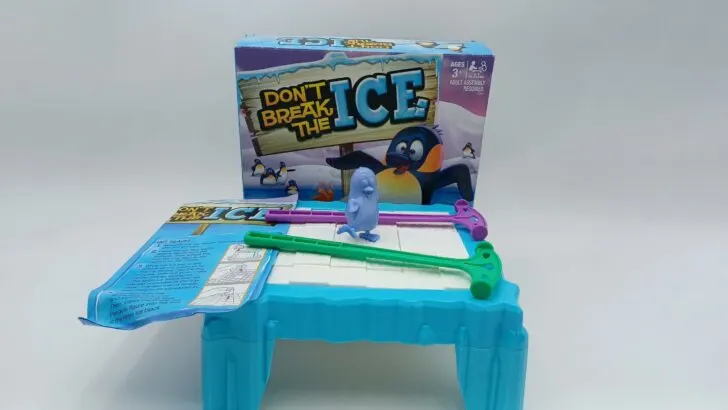Don’t Break the Ice How to Play Quick Links: Objective | Setup | Playing the Game | Winning the Game | FAQ | Components
Objective of Don’t Break the Ice
In Don’t Break the Ice, players try to safely knock out blocks of ice without making Phillip the penguin fall through it. The player that “breaks the ice” in each round loses and is eliminated from the game. The goal of Don’t Break the Ice is to be the last player to not make Phillip fall through the ice.
Setup
Place the ice tray frame upside down on the table. Attach the four ice tray legs to the bottom. Keep the ice tray frame upside down and start loading all of the ice blocks into the tray in rows. They should be placed with the smooth side touching the table (you should see the “open side”). The large ice block can be placed wherever you want (it doesn’t have to sit in the middle). Upon completion, you will have a complete sheet of ice covering the whole frame. You may have to really work to squeeze the last few ice blocks into the tray. Finally, turn over the ice tray frame and place Phillip into the slot on the large ice block.
Playing Don’t Break the Ice
The youngest player goes first in Don’t Break the Ice. Each turn, players pick up a mallet and choose an ice block to try to remove from the frame. They then use the mallet to tap/hit the ice block until it breaks off from the rest of the ice and drops to the table. Players must continue to go for the same ice block and can’t change their decision. Even if they know they will knock Phillip off the ice tray, they must continue to tap the same ice block.
If a player successfully knocks out an ice block without making Phillip fall through the ice, their turn ends and the next player (the player to their left) does the same thing. If more than one ice block falls, it’s fine (as long as Phillip doesn’t fall). However, if they break the ice and Phillip falls through, they are out of the game. Reassemble the ice tray (you can presumably change the position of the large ice block if you wish) and start another round with the remaining players.

The player successfully knocked out the ice block without causing Phillip to fall to the table. Play moves to the next player.

This player knocked Phillip through the ice. They are now out of the game. A new round begins without them (or any other player(s) who already knocked Phillip off the ice in a previous turn).
Winning Don’t Break the Ice
Continue playing rounds until all but one player has knocked Phillip through the ice. That player wins Don’t Break the Ice.
Don’t Break the Ice FAQ
Note: If you have any questions about how to play Don’t Break the Ice, leave a comment below on this post. I will try to answer any questions asked as best and as quickly as possible.
Components
- 2 mallets
- Ice tray frame
- 4 ice tray legs
- 1 large ice block
- 32 small ice blocks
- 1 Phillip the Penguin figure
- Instructions
Year: 1968 | Publisher: Hasbro
Genres: Dexterity, Children’s
Ages: 3+ | Number of Players: 2-4 | Length of Game: 5 minutes
Difficulty: Light | Strategy: Light | Luck: Moderate
Where to Purchase: Amazon, eBay – Any purchases made through these links (including other products) help keep Geeky Hobbies running. Thank you for your support.
For more board and card game how to plays/rules and reviews, check out our complete alphabetical list of board game posts.




